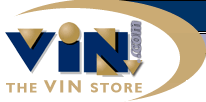
 |
 |
|
|
|
Equine Emergencies, Treatment, And Procedures (Third Edition) James A. Orsini, DVM, DACVS
Thomas J. Divers, DVM, DACVIM, DACVECC
The book has 54 contributors, making it a diverse and thorough text on equine emergencies. It is a huge expansion from the second edition. This third edition has been completely reviewed and updated. Revisions and updates include biosecurity; bullfight injuries; cytology; dental emergencies; diarrheal diseases; emergency diseases in Australia, Middle East, New Zealand, and South America; foot emergencies; gastric ulcers; infectious and zoonotic diseases; laminitis; mules and donkeys; expanded/new appendices; expanded equine drug table; nutritional guidelines for injured, hospitalized, and post-surgical patients; pain management; pediatrics; orthopedic emergencies; and show horse emergencies.
The boxed inserts on WHAT NOT TO DO are a valuable aid in treatment of an emergency. The book has tabs to assist in finding specific sections, and the inside covers display emergency drug charts and resources for information on terrorist and emergency preparedness contacts.
This book is not just broken bones and traumatic injuries. It starts out with administration of pain medications and fluids, and the various ways of delivery. Not all of the chapters cover what I would consider to be emergency medicine techniques (biopsy, fungal cultures, etc.), although these are important to begin as early as possible for a speedy diagnosis.
Ultrasonography of the musculoskeletal system is discussed. There is some excellent illustration/explanation graphics included. Also covered in this chapter are impactions; large colon torsion; medical colic; gastric distension and delayed gastric emptying; verminous arteritis; abdominal abscess and peritonitis; and hemoperitoneum. High-risk pregnancies are also thoroughly discussed.
The table of contents below illustrates the chapters and sections. The placement of red-outlined WHAT NOT TO DO boxes throughout the text add a valuable aspect. There are also green-outlined boxes of WHAT TO DO text.
There are excellent black and white and color illustrations, photos, and drawings. There is an excellent section on toxic plants (color photos and geographic range in the USA). The chapter includes signs of ingestion or exposure.
The book is interesting reading, and I found myself engrossed in the content. I would recommend the book to anyone who has the possibility of taking an equine call.
Table of Contents
ISBN: 978-1-4160-3609-8. Softcover, 864 pages, 375 illus. Trim size: 7 1/4 X 10 1/4 in. Copyright 2008. $92.95.00US.
|
||||||||||||||||||||||||||||||||||||||||||||||||||||||||||||||||||||
Date Published: April 22, 2008
|
800.700.4636 | VINGRAM@vin.com | 530.756.4881 | Fax: 530.756.6035 777 West Covell Blvd, Davis, CA 95616 Copyright 1991- Veterinary Information Network, Inc. |